Free delivery from Fr. 300 of purchase or 18 bottles, otherwise Fr. 15
Languedoc-Roussillon
150 items

IGP St-Guilhem-le-D., Mas de Daumas Gassac blanc - 2013
IGP St-Guilhem-le-Désert

IGP St-Guilhem-le-D., Mas de Daumas Gassac blanc - 2014
IGP St-Guilhem-le-Désert

Banyuls soléra ambré, Bernard Sapéras, Vial Magnères
Banyuls

IGP Côte Vermeille, Ranfio Cino, Vial Magnères (50 cl)
IGP Côte Vermeille
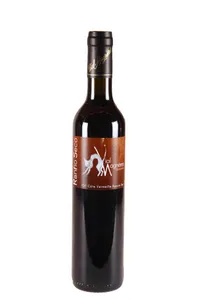
IGP Côte Vermeille, Ranfio Seco, Vial Magnères (50 cl)
IGP Côte Vermeille

Rivesaltes Ambré, Mas Cristine, Coume del Mas
Rivesaltes

Rancio sec, Pedro Soler, Dom. de la Rectorie
Vin de France
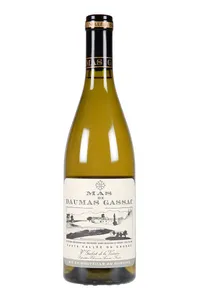
IGP St-Guilhem-le-D., Mas de Daumas Gassac blanc - 2019
IGP St-Guilhem-le-Désert

Banyuls Ambré, Coume del Mas
Banyuls

VdF, Oxy (rancio sec), Laguerre
Vin de France

Vin de France, Marlène N°3, Peyre Rose - 2010
Vin de France
Vin de France, Belle Léone, Peyre Rose - 2010
Vin de France
Vin de France, Les Cistes, Peyre Rose - 2010
Vin de France

Banyuls blanc Rivage, Vial Magnères - 2018
Banyuls

IGP St-Guilhem-le-D., Mas de Daumas Gassac blanc - 2020
IGP St-Guilhem-le-Désert

IGP St-Guilhem-le-D., Mas de Daumas Gassac rouge (37.5 cl) - 2019
IGP St-Guilhem-le-Désert

IGP Côtes Catalanes, Mastrio rouge, Paetzold - 2017
IGP Côtes Catalanes

IGP Côtes Catalanes, Louxar, Paetzold - 2017
IGP Côtes Catalanes

IGP Côtes Catalanes, Nagello, Paetzold - 2017
IGP Côtes Catalanes

Collioure blanc, Petit Couscouril, Vial Magnères - 2020
Collioure

Maury rouge sec, Montpin, Pouderoux - 2018
Maury sec
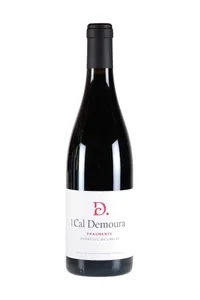
Terrasses du Larzac, Fragments, Mas Cal Demoura - 2020
Terrasses du Larzac

IGP Pays d'Hérault, Guilhem, Moulin de Gassac - 2020
IGP Pays d'Hérault

Pic Saint-Loup, Cuvée L'Ombrée, Dit de l'Hortus - 2019
Pic St-Loup

VdF, Mas de Daumas Gassac, Rosé Frizant - 2021
Vin de France

Collioure rouge, Abysses, Coume del Mas - 2020
Collioure

Côtes du Roussillon, Le Ciste rouge, Laguerre - 2018
Côtes du Roussillon

IGP St-Guilhem-le-D., Mas de Daumas Gassac rouge - 2021
IGP St-Guilhem-le-Désert

IGP St-Guilhem-le-D., Mas de Daumas Gassac rouge (magnum) - 2021
IGP St-Guilhem-le-Désert

IGP St-Guilhem-le-D., Mas de Daumas Gassac rouge (jéroboam) - 2021
IGP St-Guilhem-le-Désert

VdF, Mas de Daumas Gassac, Rosé Frizant - 2022
Vin de France

IGP St-Guilhem-le-D., Mas de Daumas Gassac blanc - 2022
IGP St-Guilhem-le-Désert

IGP, Grande Cuvée blanc, Dom. de l'Hortus - 2021
IGP Val de Montferrand

Faugères, Lou Cazalet, Dom. St-Antonin - 2020
Faugères

VdF, Pinot noir Racine, Bruno Lafon - 2022
Vin de France

VdF, Le Régal blanc, Le Loup blanc - 2020
Vin de France
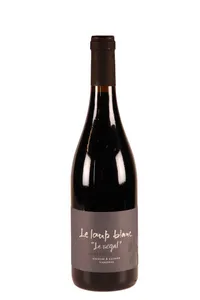
Minervois, Le Régal rouge, Le Loup blanc - 2021
Minervois

IGP Côtes Catalanes, Roc de Plane, Pouderoux - 2021
IGP Côtes Catalanes

Côtes-du-Roussillon Vill., Latour de Grès, Pouderoux - 2020
Côtes du Roussillon Villages

Terrasses du Larzac, Les Combariolles, Mas Cal Demoura - 2021
Terrasses du Larzac

Terrasses du Larzac, Feu Sacré, Mas Cal Demoura - 2021
Terrasses du Larzac

Pic St-Loup, Les Bancels, Domaine Mirabel - 2021
Pic St-Loup

Pic St-Loup, Les Eclats, Domaine Mirabel - 2021
Pic St-Loup

Terrasses du Larzac, Les Frieys, Pas de L'Escalette - 2021
Terrasses du Larzac

Côtes du Roussillon, Le Ciste blanc, Laguerre - 2021
Côtes du Roussillon

Vin de Liqueur, Vin de Laurence, Mas de Daumas (50 cl) - 2020
Vin de liqueur

Terrasses du Larzac, Mas des Brousses - 2021
Terrasses du Larzac

Corbières, Les Terrassettes, Clos de l'Anhel - 2021
Corbières

Banyuls Ambré, Coume del Mas - 2011
Banyuls

Corbières, Les Dimanches, Clos de l'Anhel - 2022
Corbières

Corbières, Le Lolo, Clos de l'Anhel - 2022
Corbières

Languedoc, Puech Noble, Dom. Rostaing - 2021
Languedoc

IGP St-Guilhem-le-D., Mas de Daumas Gassac rouge (magnum) - 2022
IGP St-Guilhem-le-Désert

IGP St-Guilhem-le-D., Mas de Daumas Gassac blanc (magnum) - 2023
IGP St-Guilhem-le-Désert

IGP Côtes Catalanes, Vermentino, Pouderoux - 2021
IGP Côtes Catalanes

Maury, Hors d'Age - 15 ans, Pouderoux (50 cl)
Maury

Collioure rouge, Montagne, Dom. de la Rectorie - 2021
Collioure

Collioure blanc, Armenn, Vial Magnères - 2020
Collioure

Collioure rouge, Les Espérades, Vial Magnères - 2020
Collioure

Banyuls Rancio, Al Tragou, Vial Magnères - 1995
Banyuls

Languedoc, Autour du Cinsault, Les Vignes Oubliées - 2022
Languedoc

Pic Saint-Loup, Sang du Calvaire, Château de Cazeneuve - 2020
Pic St-Loup

IGP Pays d'Hérault, Combe Calcaire blanc, Moulin de Gassac - 2022
IGP Pays d'Hérault
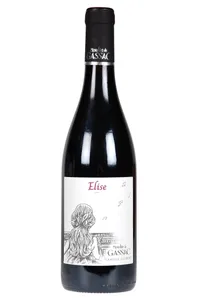
IGP Pays d'Hérault, Elise, Moulin de Gassac - 2022
IGP Pays d'Hérault

IGP St-Guilhem-le-D., Mas de Daumas Gassac blanc (37.5 cl) - 2022
IGP St-Guilhem-le-Désert

Pic St-Loup, La Grenadière, Mas Bruguière - 2021
Pic St-Loup

Faugères, Magnoux, Dom. St-Antonin - 2021
Faugères

Saint-Chinian, Cuvée Olivier, Thierry Navarre - 2021
Saint-Chinian

VdF, Ribeyrenc, Thierry Navarre - 2022
Vin de France

Pic Saint-Loup, Grande Cuvée rouge, Dom. de l'Hortus - 2021
Pic St-Loup

Terrasses du Larzac, Les Vignes Oubliées - 2022
Terrasses du Larzac

Languedoc, Les Petits Pas, Pas de l'Escalette - 2023
Languedoc

Terrasses du Larzac, Clapas rouge, Pas de L'Escalette - 2022
Terrasses du Larzac

Terrasses du Larzac, Clapas rouge, Pas de L'Escalette (magnum) - 2022
Terrasses du Larzac

IGP Hérault, Ze Cinsault, Pas de l'Escalette - 2022
IGP Pays d'Hérault

Banyuls Grand Cru, Andrée Magnères, Vial Magnères - 2012
Banyuls
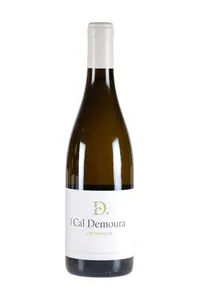
IGP St-Guilhem-le-Désert, L'Etincelle, Mas Cal Demoura - 2023
IGP St-Guilhem-le-Désert

Terrasses du Larzac, Terre de Jonquières, Mas Cal Demoura - 2022
Terrasses du Larzac

Pic St-Loup, Les Bancels, Domaine Mirabel - 2022
Pic St-Loup

IGP St-Guilhem-le-Désert, Syrah Amphore, Famille Guibert - 2022
IGP St-Guilhem-le-Désert

Collioure blanc Folio, Coume del Mas - 2023
Collioure

Collioure rouge, Schistes, Coume del Mas (magnum) - 2022
Collioure

Collioure rouge, Quadratur, Coume del Mas - 2022
Collioure

Languedoc blanc, Les Mûriers, Mas Bruguière - 2023
Vin de France

Pic St-Loup, L'Arbouse, Mas Bruguière - 2022
Pic St-Loup

IGP St-Guilhem-le-Désert, Mas des Brousses - 2023
IGP St-Guilhem-le-Désert
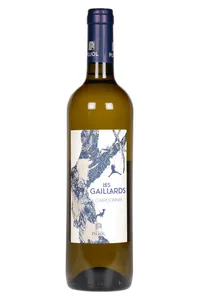
IGP Pays d'Oc, Les Gaillards (chardonnay), Pujol - 2023
IGP Pays d'Oc

IGP Pays d'Oc, Les Gaillards (malbec), Pujol - 2023
IGP Pays d'Oc

IGP Pays d'Hérault, Syrah, Moulin de Gassac - 2023
IGP Pays d'Hérault

Collioure blanc, Les Tuileries, Dom. de la Rectorie - 2023
Collioure

Collioure rouge, L'Arguelague, Dom. de la Rectorie - 2018
Collioure

IGP St-Guilhem-le-D., Mas de Daumas Gassac rouge - 2023
IGP St-Guilhem-le-Désert

IGP St-Guilhem-le-D., Mas de Daumas Gassac rouge (37.5 cl) - 2023
IGP St-Guilhem-le-Désert

IGP St-Guilhem-le-D., Mas de Daumas Gassac rouge (magnum) - 2023
IGP St-Guilhem-le-Désert
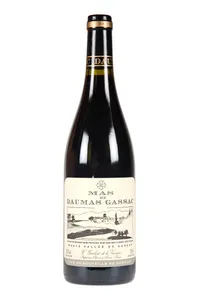
IGP St-Guilhem-le-D., Mas de Daumas Gassac rouge (jéroboam) - 2023
IGP St-Guilhem-le-Désert

IGP St-Guilhem-le-D., Mas de Daumas Gassac blanc - 2024
IGP St-Guilhem-le-Désert

IGP St-Guilhem-le-D., Mas de Daumas Gassac blanc (37.5 cl) - 2024
IGP St-Guilhem-le-Désert

IGP St-Guilhem-le-D., Mas de Daumas Gassac blanc (magnum) - 2024
IGP St-Guilhem-le-Désert

Pic Saint-Loup, Roc des Mates, Château de Cazeneuve (magnum) - 2021
Pic St-Loup

Banyuls blanc Rivage, Vial Magnères - 2023
Banyuls

